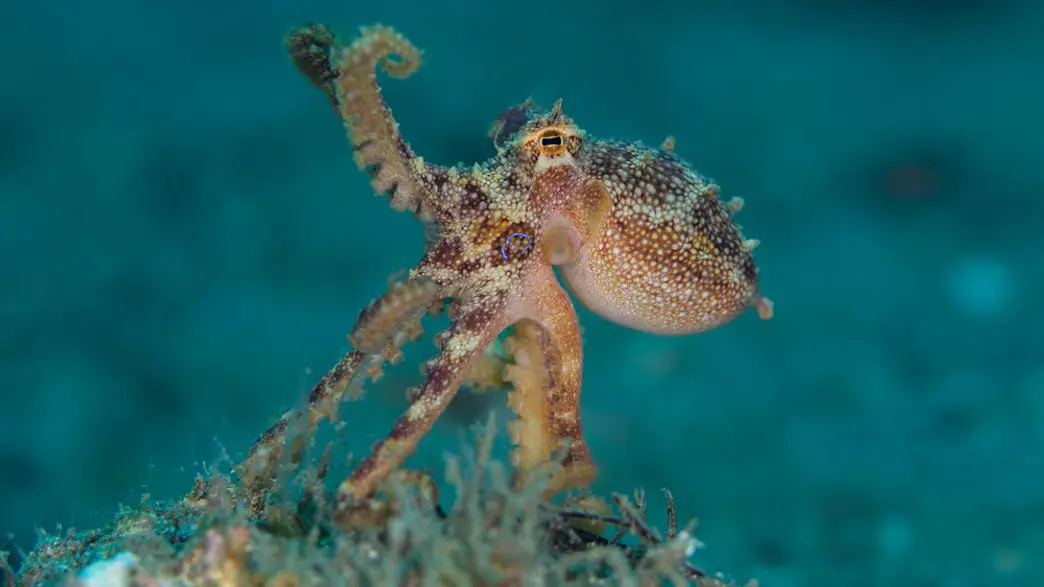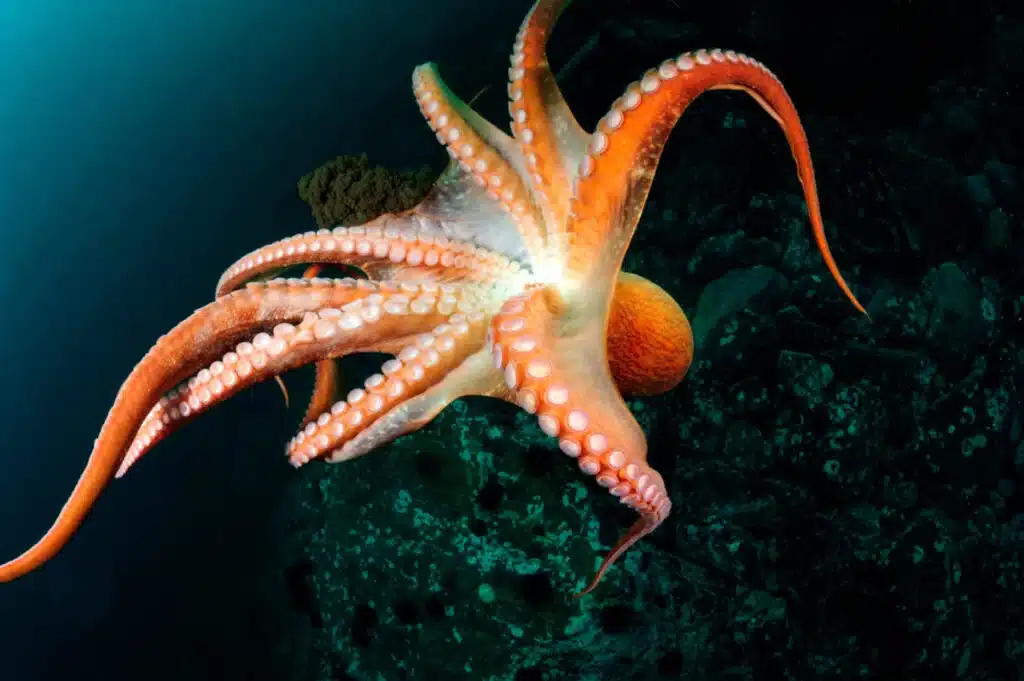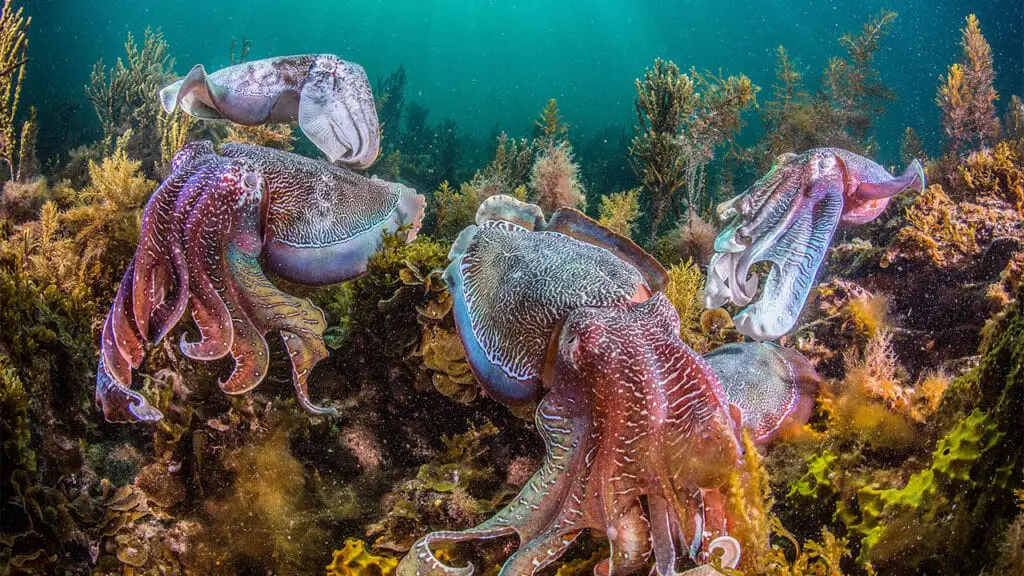Do Octopus Have Bones

Introduction
Do Octopus Have Bones: The octopus, a creature that has captivated the curiosity of marine biologists and enthusiasts alike, is a remarkable and highly evolved member of the cephalopod family. Known for its intelligence, incredible dexterity, and remarkable ability to change color and texture in the blink of an eye, the octopus’s unique characteristics have made it a subject of fascination for scientists and nature enthusiasts around the world.
One of the most intriguing aspects of the octopus is its apparent lack of bones. Unlike humans and many other animals, octopuses do not have a rigid internal skeleton. Instead, they rely on a combination of soft tissues and specialized structures to support their bodies and maintain their shape. This absence of bones allows octopuses to squeeze through tight spaces and inhabit crevices that would be inaccessible to creatures with a more rigid structure.
We will examine their anatomy, discussing the role of the beak, the structure of their arms, and the unique features that enable them to thrive without a traditional skeletal framework. By the end of our journey, we hope to shed light on this intriguing aspect of octopus biology and gain a deeper understanding of these mysterious and mesmerizing sea creatures.

Do any octopus have bones?
Octopuses do not have any bones, which is one of the most distinctive features of their evolution. Instead, they have a soft body that is supported by a combination of muscle and cartilage. This allows them to squeeze into tight spaces and escape predators with ease.
They are part of a group of animals known as cephalopods, which also includes squids and cuttlefish, and none of these creatures possess a traditional internal skeleton made of bones like humans or other vertebrates.
Their body is primarily composed of soft tissues, including a muscular mantle that surrounds a central body cavity filled with fluid. By manipulating the flow of fluid within this cavity using powerful muscles, octopuses can change the shape and rigidity of their bodies, allowing them to move, squeeze into tight spaces, and even escape from predators with remarkable agility.
However, octopuses do have some hard structures in their bodies, the most notable being their beaks. The beak is made of chitin, a tough and flexible material that resembles a parrot’s beak. This beak is used for capturing and consuming prey, as well as for defense.
Octopuses are fascinating examples of creatures that have adapted to their marine environments without the need for bones, relying instead on their fluid-filled bodies and unique anatomical features to thrive in the depths of the ocean.
How does an octopus move without bones?
Octopuses typically swim or crawl using their arms. In order to move, an octopus’ arm muscle contracts at the base, and that contraction moves down the arm in a wave. If you have ever seen a Wave at a baseball game or seen a worm crawl across the ground, this is somewhat how it would look.
The octopus’s ability to move without bones is a testament to the marvels of nature’s adaptability. Unlike animals with internal skeletons, octopuses rely on a hydrostatic skeleton and a highly evolved muscular system for both mobility and agility.
Hydrostatic Skeleton: At the core of an octopus’s body lies a fluid-filled mantle. This mantle acts like a water-filled balloon, providing structural support and allowing the octopus to maintain its shape. By contracting and relaxing the muscles surrounding the mantle, the octopus can change the pressure of the fluid within.
Muscular System: Octopuses possess a complex and highly developed network of muscles, particularly within their long, flexible arms. These muscles enable precise and coordinated movement, allowing an octopus to reach out, grab objects, and manipulate them with exceptional dexterity. The arms can also contract and expand, providing the thrust needed for propulsion through water.
Suction Cups: Each arm is equipped with rows of suction cups lined with sensory cells. These cups help the octopus grasp objects, explore its environment, and capture prey. The suction cups work in coordination with the muscular system, providing additional stability and control during movement.
The octopus’s ability to move without bones is a remarkable example of evolutionary adaptation. Its unique combination of a hydrostatic skeleton and specialized musculature allows it to navigate the underwater world with astonishing grace and versatility, making it one of the ocean’s most enigmatic and captivating creatures.
Why do octopus don’t have bones?
Octopuses are members of the Cephalopoda class in the Mollusca phylum. That’s a creature that has neither a skeleton nor backbone. They have what is known as a hydrostatic skeleton which means that this type of skeleton structure allows them to keep their long body parts rigid.
Octopuses, unlike many other creatures in the animal kingdom, do not possess bones. Instead, they have evolved to rely on a unique and flexible structure known as a hydrostatic skeleton. This absence of bones provides octopuses with several significant advantages in their aquatic habitats.
One of the primary reasons octopuses lack bones is their need for unparalleled agility and flexibility. In the dynamic underwater world they inhabit, a rigid skeletal structure would be a hindrance rather than an asset. The hydrostatic skeleton consists of fluid-filled sacs and a complex network of muscles, allowing octopuses to change their shape, squeeze through tight spaces, and even mimic the texture of their surroundings with remarkable precision. This incredible flexibility enables them to be effective hunters and escape artists.
Octopuses are generally soft-bodied animals, which allows them to compress their bodies to fit into crevices, evade predators, and capture prey. Their boneless bodies are also advantageous when it comes to propulsion; they can expel water from their mantle cavity to jet-propel themselves at high speeds.
The absence of bones in octopuses is a testament to their remarkable adaptation to the aquatic environment. Their hydrostatic skeleton provides them with the agility and versatility needed for survival and success in the ever-changing underwater world they call home.
Are there bones in octopus tentacles?
Octopuses don’t have bones because they are invertebrates. Octopus arms are muscular hydrostats, without bones. Even their “teeth” are actually denticles (made of dentin).
Octopus tentacles do not contain bones. In fact, octopuses are entirely boneless creatures, lacking any form of internal skeleton, not just in their tentacles but throughout their bodies. Instead, they rely on a hydrostatic skeleton, which is a fluid-filled cavity surrounded by muscular walls, for support and movement.
Octopus tentacles are incredibly flexible and agile due to their unique structure. Each tentacle is filled with muscle fibers and lined with rows of specialized suckers that are essential for grasping objects and capturing prey. The absence of bones in the tentacles allows them to bend, stretch, and twist in virtually any direction, providing the octopus with exceptional dexterity and precision.
The muscular contractions in the tentacles, coupled with the action of the suckers, enable octopuses to perform a wide range of tasks, such as catching fast-swimming fish, opening shells to access mollusks, and even manipulating objects in their environment. This adaptability and functionality in the absence of bones showcase the remarkable evolution of octopuses to excel in their underwater habitats.
Octopus tentacles are boneless and rely on their muscular structure and the hydrostatic support system to facilitate the creature’s incredible range of movements and activities in the ocean.
Is octopus a boneless animal?
Octopuses are ocean creatures that are most famous for having eight arms and bulbous heads. Some other fun facts: They have three hearts and blue blood; they squirt ink to deter predators; and being boneless, they can squeeze into (or out of) tight spaces.
An octopus is indeed a boneless animal. Unlike many other animals, including humans, octopuses belong to a group known as cephalopods, which are characterized by their soft, flexible bodies devoid of any internal bones. Instead of relying on a rigid skeletal structure, octopuses have evolved a hydrostatic skeleton, which consists of a fluid-filled cavity enclosed by muscular walls.
This hydrostatic skeleton serves multiple purposes in octopus biology. It provides structural support, allowing the octopus to maintain its shape and integrity, and it enables the creature to move with remarkable agility and flexibility. By contracting and relaxing the muscles surrounding the fluid-filled cavity, octopuses can change the pressure within, altering their body shape and enabling them to squeeze through tight spaces, swim swiftly, and capture prey.
The absence of bones in octopuses is a key adaptation that makes them well-suited to their marine environments. It grants them the ability to explore complex underwater landscapes, hunt effectively, and evade predators. The octopus’s boneless body is a testament to the incredible diversity of life on Earth and the many ways in which organisms have evolved to thrive in their respective niches.
How do octopuses move without bones?
Octopuses are extraordinary marine creatures that move without the aid of bones, relying instead on a highly efficient and unique mechanism known as a hydrostatic skeleton. Unlike animals with rigid skeletons, octopuses have a soft, flexible body primarily composed of muscle and connective tissue.
The key to their boneless locomotion lies in their ability to control the flow of fluid within their body. Octopuses have a central cavity called the mantle, which contains most of their organs and is filled with water. By contracting and relaxing the muscles around this cavity, they can change the pressure of the fluid inside, effectively altering the shape and volume of their body.
When an octopus wants to move, it contracts the muscles in its mantle cavity, forcing water out through a narrow opening called the siphon. This jet of water propels the octopus in the opposite direction, allowing it to swim with remarkable speed and precision. By adjusting the direction and force of the water jet, octopuses can maneuver gracefully, change direction rapidly, and even hover in place.
Additionally, their boneless bodies enable octopuses to squeeze through tight spaces, navigate complex environments, and exhibit incredible dexterity when capturing prey. This hydrostatic skeleton not only facilitates their movement but also contributes to their overall adaptability and survival in the underwater realm, showcasing the ingenuity of nature’s design.
Are there any hard parts in an octopus’s body?
While octopuses are primarily known for their boneless bodies, there are a few hard parts in their anatomy:
Beak: The most prominent hard part in an octopus’s body is its beak. Octopuses have a hard, parrot-like beak made of chitin, which is a tough, organic material. This beak is located at the center of their arms and serves as a powerful tool for capturing and consuming prey. It allows octopuses to crush shells and break down the tough exoskeletons of crustaceans.
Stylet: In addition to the beak, some species of octopuses possess a small, hard structure called a stylet. The stylet is often found within the octopus’s body, near the digestive gland. It is believed to have a role in aiding digestion or in providing structural support.
These hard parts, however, are minimal and serve specific functions. The rest of the octopus’s body, including its mantle, arms, and suckers, is soft and boneless. This lack of an internal skeleton, except for these specialized hard structures, is a key adaptation that enables octopuses to be highly flexible, agile, and capable of fitting into tight spaces. Their soft, muscular bodies, combined with the beak and stylet, allow them to thrive in their underwater habitats, capture prey, and escape from predators.
How does the absence of bones benefit octopuses?
The absence of bones in octopuses provides several significant benefits, allowing them to thrive in their underwater environments:
- Flexibility and Agility: Octopuses are incredibly flexible and agile due to their boneless bodies. Their hydrostatic skeleton, composed of a fluid-filled mantle and powerful muscles, allows them to change shape rapidly and squeeze into tight spaces. This flexibility is essential for navigating complex underwater terrain, exploring crevices, and escaping predators.
- Camouflage and Defense: Octopuses are masters of disguise, and their boneless bodies play a crucial role in this ability. They can alter their shape, texture, and color, blending seamlessly with their surroundings to avoid detection by both prey and predators. Their lack of bones facilitates rapid shape changes, enhancing their camouflage and making them less vulnerable to threats.
- Efficient Predation: Octopuses primarily rely on their arms, equipped with rows of specialized suckers, to capture prey. Their boneless arms are highly dexterous and can reach out in any direction to secure food with precision. This adaptability allows octopuses to capture fast-swimming prey and manipulate objects effectively.
- Jet Propulsion: Octopuses use jet propulsion to move swiftly through the water. The absence of bones reduces their overall weight, making it easier for them to control their buoyancy and move with efficiency. This propulsion mechanism is powered by muscular contractions in their mantle and is crucial for both hunting and escaping danger.
The absence of bones in octopuses is a remarkable adaptation that enables them to excel in their underwater habitats. It provides them with the flexibility, agility, and stealth needed for survival and success as predators and masters of camouflage in the diverse and dynamic marine ecosystems they inhabit.

Conclusion
Octopuses are indeed boneless creatures, a distinctive feature that sets them apart from most animals. Instead of a rigid internal skeleton, they rely on a hydrostatic structure, composed of a fluid-filled mantle and powerful muscles, to maintain their shape and move gracefully through aquatic environments. This lack of bones enables them to be masters of flexibility, squeezing through tight spaces, and adapting to their ever-changing surroundings with astonishing ease.
While they lack traditional bones, octopuses possess a beak made of chitin, a tough, organic material. This beak serves as their primary means of offense and defense, allowing them to capture prey, open shells, and protect themselves from predators.
Octopus arms are equipped with an intricate network of muscles, suckers, and sensory cells that grant them exceptional dexterity and control. These arms are both powerful and agile, enabling octopuses to manipulate objects and navigate their environment with precision.
Octopuses’ bonelessness is a testament to the incredible adaptability and evolution of marine life. Their unique biology has allowed them to thrive in various oceanic ecosystems, showcasing the remarkable diversity of life beneath the waves. Octopuses will continue to enchant and mystify scientists and nature enthusiasts alike as we uncover more of their secrets in the ongoing exploration of the deep blue sea.



